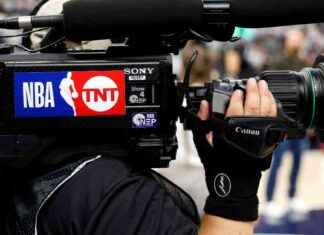"Pop Icon Andy Warhol Dies After Routine Surgery” ran the headline in the Houston Chronicle. Time magazine questioned how “the country’s most famous pop artist dies in a prestigious big-city hospital after a rather routine gallbladder operation.”
A routine surgery: Some version of that story was repeated around the world in the days and decades after the death of the 58-year-old artist, the 30th anniversary of which is on Wednesday.
Dr. John Ryan, a medical historian and retired surgeon, has recast the story line. “This was major, major surgery — not routine — in a very sick person,” Ryan, emeritus chief of surgery at Virginia Mason Hospital in Seattle, said in a recent phone interview.
According to Ryan, who presented his findings on Sunday at the annual meeting of the Pacific Coast Surgical Association, Warhol’s death shouldn’t be seen as quite such a surprise. Since his retirement four years ago, Ryan, a jovial and sporty Seattleite, has been digging into Warhol’s medical history. (He got a push in that direction from his brother-in-law Hal Foster, a distinguished scholar who writes on Pop Art.) Ryan has found that the surgeon who performed Warhol’s final operation was working on someone with almost 15 years of gallbladder trouble and a family history of the same — Warhol’s father had his gallbladder removed in 1928, the year his famous son was born.
For at least a month before his death, Warhol had been ill, but had done his best to keep up his usual exhausting pace. His terror of hospitals had prevented him from getting any serious treatment. Even once Warhol had finally ended up in the office of Bjorn Thorbjarnarson, a leading surgeon — he was known for treating the Shah of Iran — Warhol had begged for some kind of stay-at-home treatment. “I will make you a rich man if you don’t operate on me,” the artist had said, Thorbjarnarson recalled in 2014. (He is now 95 and lives in Florida.)
Thorbjarnarson refused Warhol’s entreaties and found himself justified three days later, when the sick man was at last on the operating table at New York Hospital (now NewYork-Presbyterian). The surgeon found a gallbladder full of gangrene; the organ fell to pieces as he removed it, he said.
As Ryan learned in his research, Warhol was dehydrated and also emaciated from having barely eaten in the previous month; had for years been taking a daily dose of speed; and was still suffering from the effects of a brush with death in 1968, when he was shot by an enraged hanger-on, Valerie Solanas. Only a brilliant surgeon and brilliant luck had saved his life then — he had been declared dead in the emergency room and had nine damaged organs.
Recovery from his gunshot wounds was never fully complete. He was left with a lifetime of trouble eating and swallowing, as well as a split in his abdominal muscles that gave him a large hernia. (He wore girdles to hold in his bowels.) So in 1987, on top of the tricky gallbladder removal, Thorbjarnarson would have had no choice but to repair Warhol’s abdominal wall.
The operation seemed to go well, and Warhol was in his room making calls by that evening. He still seemed fine when his private nurse checked on him at 4 a.m. But about two hours later, she found him blue and unresponsive and resuscitation efforts failed. An autopsy concluded that “ventricular fibrillation” was the cause of death, meaning that Warhol’s heart had quivered and stopped.
Stewart Redmond Walsh, professor of vascular surgery at the National University of Ireland, Galway, has researched sudden death after surgery, and found that it is not all that surprising. When a sick body goes through the trauma of a major operation, the stress on the entire system, including the heart, can sometimes be fatal, he explained. Warhol, Walsh said in a phone interview, “was unlucky,” but the artist’s bad luck should be thought of as less like a lightning strike than like being hit by a car while crossing the street.
When Ryan entered the data from Warhol’s case into the new Surgical Risk Calculator of the American College of Surgeons, it put such a patient’s chance of dying at 4.2 percent.
Warhol had cheated death once, in June 1968, when his surgeon gave even odds on the artist lasting the night. In their second go-round, death took the longer odds, and won.
Our editors found this article on this site using Google and regenerated it for our readers.







